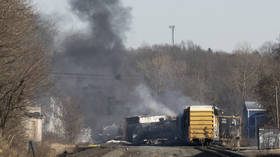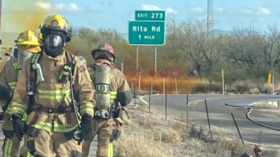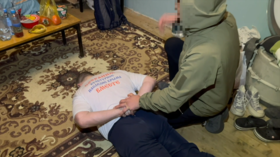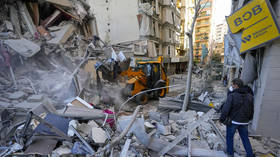US transport head blames Trump for toxic train disaster

US Transportation Secretary Pete Buttigieg blamed the rollback of safety regulations under President Donald Trump for the catastrophic derailment of a Norfolk Southern train earlier this month in East Palestine, Ohio. After over a week of silence on the subject, Buttigieg suggested the Trump administration was responsible for the accident and the subsequent controlled chemical explosion.
Insisting his agency had improved railroad safety through “historic investments,” Buttigieg claimed the Department of Transportation was nevertheless “constrained by law on some areas of rail regulation (like the braking rule withdrawn by the Trump administration)” in a tweet on Tuesday. Ten days earlier, the 150-car train carrying ten cars of hazardous materials derailed, allegedly due to a mechanical issue with a rail car axle and an emergency brake failure on a straight stretch of railroad.
The braking rule in question required trains carrying some hazardous materials to use high-tech electronically-controlled pneumatic brakes. It was rolled back in 2017, after a law passed in 2015 – long before Trump became president – initiated a requirement for cost-benefit analysis for new safety regulations.
The Department of Transportation explained in a statement on Wednesday that the 2015 legislation “makes it challenging to reinstate the rule in its previous configuration – due to threats of litigation and opposition in Congress.” The agency nevertheless promised to “evaluate action to prevent this from happening again.”
As the derailed cars released the chemicals, including carcinogens, into the air, water, and soil, Norfolk Southern initiated a controlled release and burnoff of the highly toxic gas vinyl chloride from one of the cars. The company insisted that failing to do so could turn the derailed train into a “bomb” that would send shrapnel and poisonous fumes rocketing through the surrounding community. When burned vinyl chloride turns into hydrogen chloride and phosgene, a chemical weapon used in World War I.
While the local authorities lifted the initial evacuation order and declared the water safe to drink, some residents have complained of alarming physical symptoms, as well as dead pets, livestock, and fish.
The Environmental Protection Agency has accused Norfolk Southern of failing to properly dispose of contaminated soil and has found toxic butyl acrylate in the Ohio River, which supplies drinking water to about 10% of the US population. At least five lawsuits have been filed against Norfolk Southern over the derailment accusing the company of negligence.














